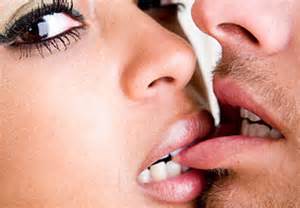
Okay everybody, here are some myths it is time to bust …
Men like porn, women don’t. Turns out, just not true. First of all, porn or erotic art has been around since humans have been carving on walls and while the artists didn’t sign their names, it seems unlikely that this was just for men. Currently, stats tell us that in 2007 over the course of a month’s monitoring 1 in 3 visitors to the selected porn site was a woman. And plenty of women enjoy porn. A 2006 study from McGill University found that women watching porn reached physical arousal in an average of 12 minutes while for men is took 11 minutes. Visuals work for lots of people and the excitement of watching sex is probably deeply rooted in human desire maps. And the biggest problem many women report having with porn? Feeling bad about their bodies in comparison to the unrealistic expectations created in porn. Talking to men, you might hear about painful body or performance comparisons too. If only we were talking to each other about real life sex…
Oxytocin is a women’s hormone – Oxytocin, significantly released during childbirth and breast feeding, has been studied for its effect on women and often is talked about as though it is a women’s hormone exclusively and as though women have some lock on bonding because of it. But men’s bodies receive a surge of oxytocin after orgasm, and yes, it also helps them to feel trusting and bonded. It also can make all of us more relaxed and sleepy (touching on another gender sexual stereotype). Oxytocin can also be triggered through relaxed touch or hand holding, so cuddle up, it’s good for all of us.
Women have lower desire than men – Not true, not true, not true. Gosh, why is this one still hanging in there? Both men and women have desire patterns that will vary throughout a lifetime, some periods being hotter than others. And there are so many factors that affect sexual desire for everyone, from stress, relationship conflict, hormones (yes, testosterone fluctuates too), children in the house, shame, body image concerns, and on and on. A man’s desire is just as complex as a woman’s. And a woman can be full of desire at any age.
Men are the ones who cheat – Current research, and my experience as a couple’s therapist, are showing that rates of infidelity among women and men are actually pretty similar. Both men and women can struggle with monogamy and can be tempted by new sexual partners. Even with equal opportunity infidelity out there, we still hear more about men’s cheating behavior, in large part because there are still more men in power for the press to report on. Sexual stereotypes weigh heavy here and can damage relationships and trust before they even start.
Women need to feel connected to have sex, men need to have sex to feel connected – Human beings are each unique with a life’s worth of experiences, patterns, beliefs, and emotions that go into our emotional needs and sexual needs. What any one of us needs to feel connected is different. What any one of us needs to feel sexual is different too. There are lots of men who talk to me about wishing their partner would give them some focused emotional attention before expecting sex and many women who say they would like to have sex and then bask in the connectedness that creates for them. We are each different.